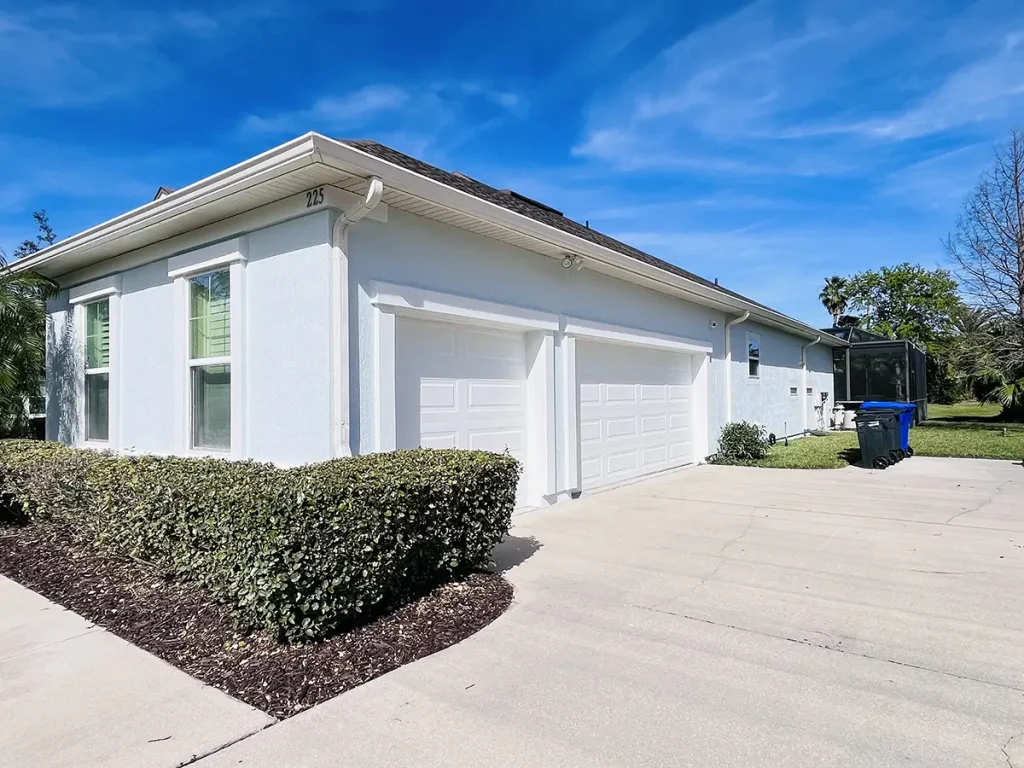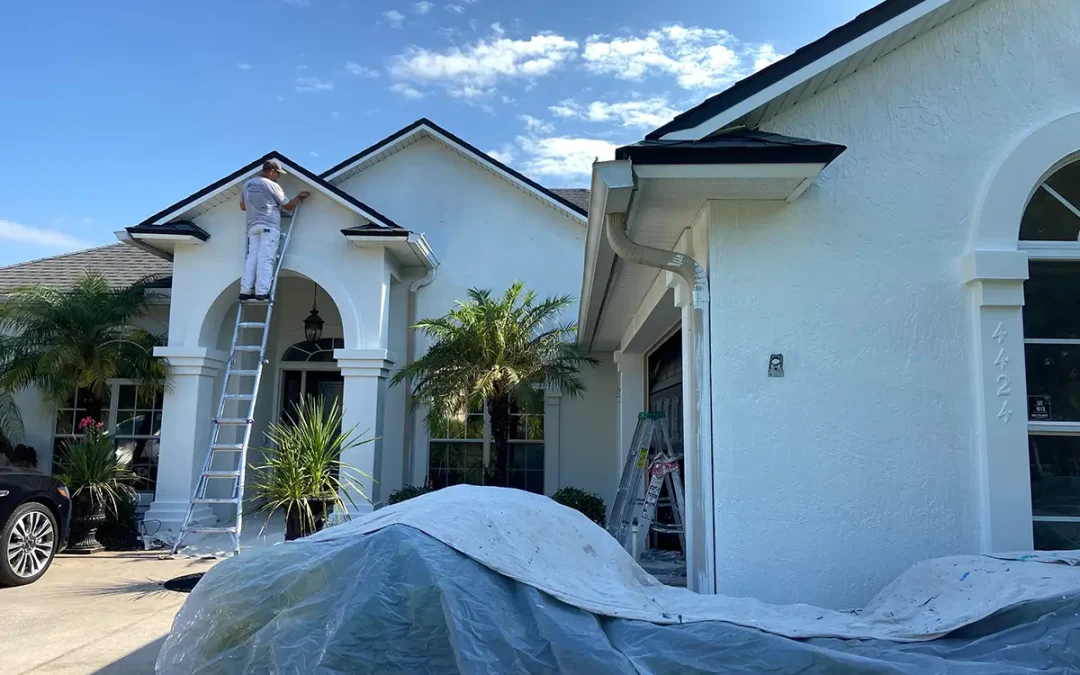Stucco is a popular exterior finish that can transform the appearance of your home, adding texture, color, and durability. Homeowners often wonder whether they can apply color stucco over paint and how this process works. The good news is that it’s possible to give your home a fresh, modern look with colored stucco, even if your exterior is already painted.
However, there are some important steps you need to take to ensure a lasting and professional result.
In this article, we’ll cover everything you need to know about stucco, from the different types and the materials it’s made of to applying stucco over brick or painted walls. We’ll also provide tips on how to paint stucco surfaces and answer some common questions about maintaining and removing stucco finishes.
Can you put color stucco over paint?
Yes, you can apply color stucco over painted surfaces, but the process requires careful preparation. Stucco is a material that needs a good bond to the surface it’s applied to, and paint can sometimes create a barrier that prevents proper adhesion. To ensure the stucco adheres well and lasts for years, there are a few key steps to follow:
- Surface cleaning: Before applying stucco over paint, it’s important to clean the painted surface thoroughly. Dirt, dust, and any loose paint should be removed to avoid affecting the bonding process.
- Check for flaking paint: If the paint is old and starting to flake, this must be addressed before applying stucco. Scrape off any loose or peeling paint to create a smooth surface for better stucco adhesion.
- Use a bonding agent: Applying a bonding agent is usually necessary when working with painted surfaces. A bonding agent will create a sticky layer that helps the stucco adhere to the paint, ensuring a strong, long-lasting bond.

Do you need a bonding agent for stucco?
In most cases, a bonding agent is essential when applying stucco, especially if you’re working with a painted surface. Bonding agents act as a bridge between the existing surface and the new layer of stucco, ensuring the stucco adheres properly and doesn’t crack or peel over time.
There are a few situations where a bonding agent is particularly important:
- Over painted surfaces: As mentioned, stucco doesn’t bond well to smooth, painted walls on its own. A bonding agent provides the rough texture needed for the stucco to grip the surface.
- Over brick or smooth concrete: When applying stucco over brick or smooth concrete, a bonding agent can help ensure proper adhesion. Brick can have uneven surfaces, and smooth concrete lacks texture, both of which can make it difficult for stucco to stick without a bonding layer.
- To strengthen stucco repairs: If you’re repairing sections of stucco, using a bonding agent can help the new stucco integrate smoothly with the old material, preventing cracks and separation.

-> Repainting over dark or textured walls at home
Stucco over brick: What you need to know
Applying stucco over brick is a great way to update the look of your home while taking advantage of the strength and durability of brick as a base material. However, the process requires some special considerations to ensure the stucco bonds well and remains secure for years to come.
- Surface preparation: Just like with painted surfaces, preparation is key. The brick must be thoroughly cleaned to remove dirt, dust, and any loose mortar or crumbling brick. A power washer can help ensure the brick is clean and ready for the stucco application.
- Fill in the joints: If the mortar between the bricks is recessed, it’s a good idea to fill these gaps before applying stucco. This creates a more even surface and prevents the stucco from cracking over time as it fills in those gaps.
- Apply a bonding agent: Since brick is a porous material, a bonding agent is necessary to ensure the stucco adheres properly. This helps the stucco grip onto the surface and prevents it from detaching later on.
- Multiple layers of stucco: Typically, stucco is applied in several layers over brick. The first layer, or scratch coat, is applied to create a rough surface. Once that’s dried, a second layer is added, followed by a third finishing coat if necessary. Each layer must be applied carefully and allowed to dry completely to avoid cracking.
How to get rid of stucco walls
Removing stucco can be a labor-intensive process, but it may be necessary if you’re looking to update your home’s exterior or if the stucco has become damaged over time.
Here are the steps involved in getting rid of stucco walls:
- Assess the stucco condition: Before beginning the removal process, it’s important to assess the condition of the stucco. If it’s cracking or damaged, this may make removal easier. However, well-applied stucco can be difficult to take off and may require special tools.
- Tools for removal: You will need specific tools to remove stucco efficiently. A chisel, hammer, and a masonry grinder are common tools used in this process. Safety gear, such as gloves, goggles, and a dust mask, is also essential since removing stucco creates a lot of dust and debris.
- Break it into sections: Begin by breaking the stucco into smaller sections with a chisel and hammer. Focus on one section at a time to keep the process manageable. Once you’ve created an opening, you can work the chisel under the stucco to pry it away from the surface.
- Removing the stucco layers: Stucco is often applied in multiple layers, so the removal process can involve chipping away at each layer individually. Patience is key, as rushing can damage the underlying structure of your home.
- Repairing the surface: Once the stucco is removed, you’ll need to inspect the surface underneath for any damage. If you find cracks or holes, you’ll want to repair these before applying any new material, whether it’s new stucco, siding, or paint.
-> Get a quote!
How to paint the exterior of a stucco house
Painting a stucco house can refresh its appearance and protect the surface from the elements. Stucco’s rough texture adds complexity to the painting process, but with the right approach, you can achieve a smooth, long-lasting finish.
Here’s how to paint the exterior of a stucco house:
- Prepare the surface: Clean the stucco surface thoroughly, using a power washer to remove dirt, dust, and any peeling paint. Let the surface dry completely before moving on to the next step.
- Repair cracks and damage: Stucco is prone to cracks, which need to be repaired before painting. Use an acrylic caulk to fill in any small cracks, and for larger areas, use a stucco patching compound. Once the repairs are dry, sand down any rough spots to ensure a smooth, even surface.
- Prime the surface: Priming is an essential step when painting stucco. A high-quality masonry primer designed for textured surfaces will help the paint adhere better and last longer. Apply the primer using a roller with a thick nap, or for more textured stucco, use a sprayer to ensure even coverage.
- Choose the right paint: For stucco, acrylic latex paint is the best choice because it is flexible and can expand and contract with the surface. This type of paint is durable and resistant to cracking, which is important for maintaining the look of your stucco over time.
- Apply the paint: Once the primer is dry, apply the paint using a roller, sprayer, or brush, depending on the texture of the stucco. Sprayers are often the most efficient for highly textured surfaces, while rollers with thick nap covers work well for medium textures. Apply two coats of paint for full coverage, allowing each coat to dry fully between applications.
What is stucco made of?
Stucco is a versatile and durable material used in both interior and exterior finishes. It’s made from a combination of natural materials, making it both strong and flexible. Traditional stucco, also known as “cement stucco,” is made up of three primary ingredients:
- Cement: Portland cement is the primary binding agent in stucco. It provides the strength and durability that makes stucco a long-lasting exterior finish. Cement also helps the stucco adhere to different surfaces, including brick, wood, and masonry.
- Sand: Sand is used to give stucco its texture and bulk. Depending on the type of finish desired, different sizes of sand particles can be used to create either a smooth or rough texture. Sand is crucial in balancing the cement and lime in the stucco mix.
- Lime: Lime is added to the mixture to make the stucco more workable and flexible. It improves the stucco’s ability to expand and contract with changes in temperature, preventing cracks from forming over time. Lime also makes the stucco less brittle, which is important for long-term durability.
Modern stuccos
Modern stucco may also include additional elements, such as acrylic additives or synthetic fibers, which enhance its flexibility, water resistance, and durability. These additives are particularly useful for homes in extreme climates or areas prone to moisture, as they prevent cracking and water damage.
Stucco is typically applied in layers, starting with a base or “scratch coat,” followed by a second “brown coat,” and finished with a final “finish coat” that can be textured or smooth. These layers give stucco its strength and long-lasting performance, making it a popular choice for homes around the world.
Stucco is a versatile and durable option for home exteriors, offering a wide range of finishes and colors that can completely transform the look of your property. Whether you’re considering applying color stucco over paint, updating stucco over brick, or choosing the best type of stucco finish for your home, the key is careful preparation and the right materials. By using a bonding agent when necessary and selecting the right stucco colors, you can ensure a beautiful, long-lasting finish.
With the right knowledge and approach, stucco provides a stunning, low-maintenance appearance that increases the aesthetics and value of your home.
Ask for professional help! We are happy to help with exterior wall painting of family houses and vacation homes in the Saint Augustine area! Call for a free quote! 1(904) 217-9681 – Peter Hando


